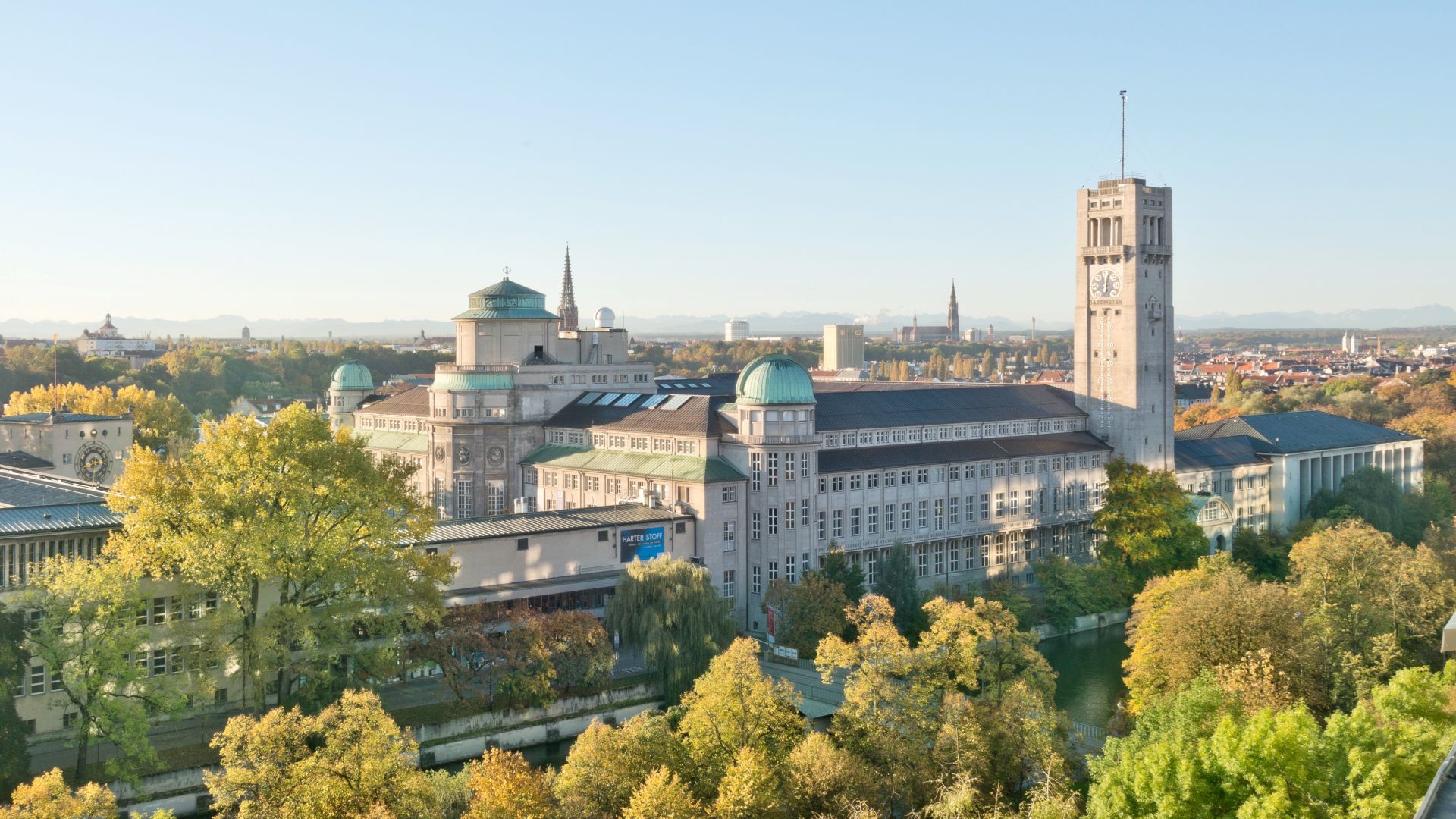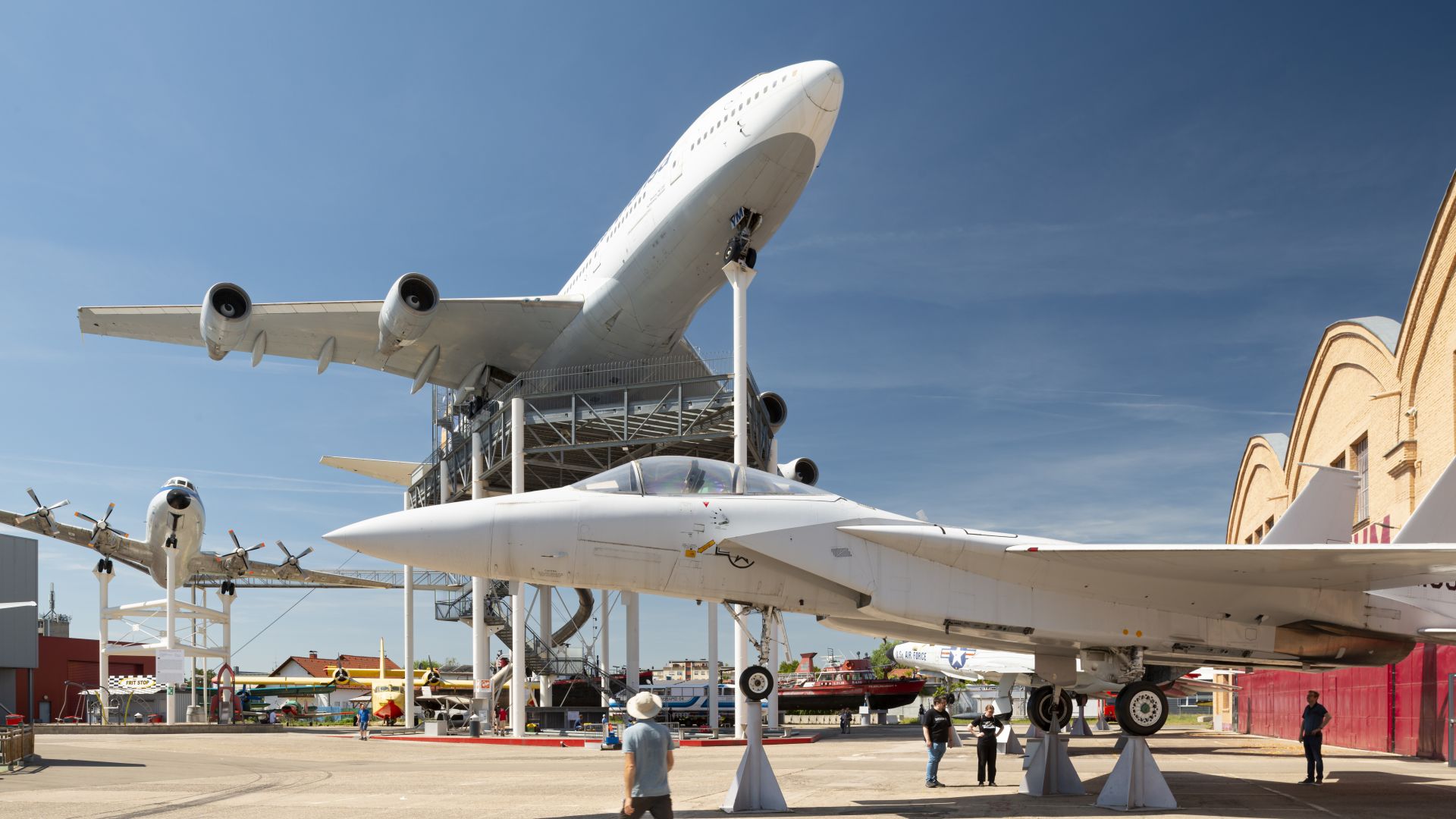Cities & Culture
Technology Museums: Fascination with Technology
“So that’s how it works!” This sentence is surely uttered frequently in technology museums. After all, these museums vividly explain the beginnings, developments, and workings of important achievements, from computers to zeppelins. And it’s not just engineers who are inspired by this!
Deutsches Museum Munich: Big is Beautiful!
 Munich: Deutsches Museum on Museum Island
©Deutsches Museum (Deutsches Museum)
Munich: Deutsches Museum on Museum Island
©Deutsches Museum (Deutsches Museum)
For the world's largest technology museum (with over 45,000 square meters of exhibition space) and Germany's most visited museum, attracting around 1.5 million visitors annually, sturdy footwear is recommended. The basic tour alone spans 17 kilometers, leading from the depths of a massive mine through the specially designed "Children's Kingdom" for ages 3 to 8, up to the planetarium and the sundial garden on the terrace at level six. Approximately 25,000 exhibits lie along the way, showcasing various masterpieces of technological evolution: an astrolabe from Johannes Kepler's era, a replica of the Z3 – Konrad Zuse's room-sized first digital computer, the famous "Enigma" cipher machine, and much more. Once the multi-billion euro renovation program for the museum's 125th anniversary in 2028 is completed, the "Cathedral of Inventors" will be able to reveal even more of what is currently stored in its archives. Many treasures have already been relocated, for instance to the Verkehrszentrum (transport museum) and Oberschleissheim Airfield branches, as well as to the Deutsches Museum, Bonn the Nürnberg location, which opened as a "Museum of the Future" in 2021.
Historical-Technical Museum Peenemünde (HTM): A Nazi Military Stronghold
 Peenemünde: Historical-Technical Museum with station Karlshagen from the front
©Historisch-Technisches Museum GmbH (HTM Peenemünde Archiv)
Peenemünde: Historical-Technical Museum with station Karlshagen from the front
©Historisch-Technisches Museum GmbH (HTM Peenemünde Archiv)
At first glance, committed pacifists might hesitate to visit the HTM at the northern tip of Usedom, as it deals with the history of missiles and weapons. More significantly, the Peenemünde Research Center formed Europe's largest military research center from 1936 to 1945. In 1942, the world’s first rocket was launched into space from here, a milestone for space travel. However, this achievement has a terrible downside, as the tests were used to develop lethal aviation bombs and the infamous "Vengeance Weapons" - the V1 and V2 missiles. The exhibition, filled with documents, original parts, eyewitness interviews, and documentary films,doesn’t hide the fact that thousands of concentration camp prisoners and forced labourers died during the production of these weapons. It's a grim but integral part of German history. At the nearby power plant, the largest technical monument in Mecklenburg-Western Pomerania, as well as on a signposted nature trail, all of the authentic sites across this 25-square-kilometre area are comprehensively described. Since the HTM is also the site of numerous peace-promoting activities - such as an international meeting place and youth programs - it's ultimately a positive place for pacifists after all.
Zeppelin Museum Friedrichshafen: "Hindenburg" Reloaded
 Friedrichshafen: Woman explains the Zeppelin to mother and child in the Zeppelin Museum
©Deutsche Bodensee Tourismus GmbH (Dietmar Denger)
Friedrichshafen: Woman explains the Zeppelin to mother and child in the Zeppelin Museum
©Deutsche Bodensee Tourismus GmbH (Dietmar Denger)
In the 1930s, the Zeppelins "LZ 127" and "LZ 129" were the gold standard of transatlantic travel, providing quick and comfortable journeys for transcontinental trips to North and South America from Friedrichshafen on Lake Constance. Although the era of airships ended tragically with the fire of the LZ 129 "Hindenburg," you have to admit: no other means of transport has become as timeless and globally iconic as the Zeppelin. A visit to the museum of the same name underscores this impression. It showcases the world's largest collection of airship history as a multimedia narrative of living history, brave individuals, and technical achievements. The centerpiece is the "Hindenburg," whose construction is recreated using original materials as well as the skeleton and outer shell. Also on display is the largest preserved fragment: the rudder bearing arm, part of the tail unit. Visitors can explore replica passenger compartments, experiment stations, and a flight simulator of the "Zeppelin NT," reintroduced in the 1990s. The highlight? After visiting the museum, take flight on an actual airship from the nearby Zeppelin Hangar!
Technik Museum Speyer: Comprehensive Insights into Technology
 Speyer: Exhibition with aircraft at the Technik Museum
©DZT (Francesco Carovillano)
Speyer: Exhibition with aircraft at the Technik Museum
©DZT (Francesco Carovillano)
Fortunately, it is possible to stay overnight near the Technik Museum of Speyer. After all, it’s hardly possible to admire all the exhibits of the history of technology and mobility on display across more than 25,000 square metres of hall space and 150,000 square metres of open space in detail in just one day. Anyone on a tight schedule should pick out the highlights, which include the lifeboat "John T. Essberger," a German Armed Forces (Bundeswehr) "Transall," and a fully accessible jumbo jet. Eye-catching exhibits also include the houseboat of the famous Kelly Family, the Antonov AN 22 – the world's largest mass-produced propeller-driven aircraft – and the Buran, the "Russian Space Shuttle." And then there's outer space. The exhibition "Apollo and Beyond" documents the development of manned spaceflight with unique exhibits, including the original landing capsule that Ulf Merbold returned to Earth from the "Mir" space station in 1994. Visitors can even see a genuine moon rock in an authentic setting. The icing on the cake is the only IMAX DOME cinema in Germany. Here, films are projected not onto a flat screen, but instead onto a gigantic dome spanning 24 metres in diameter.